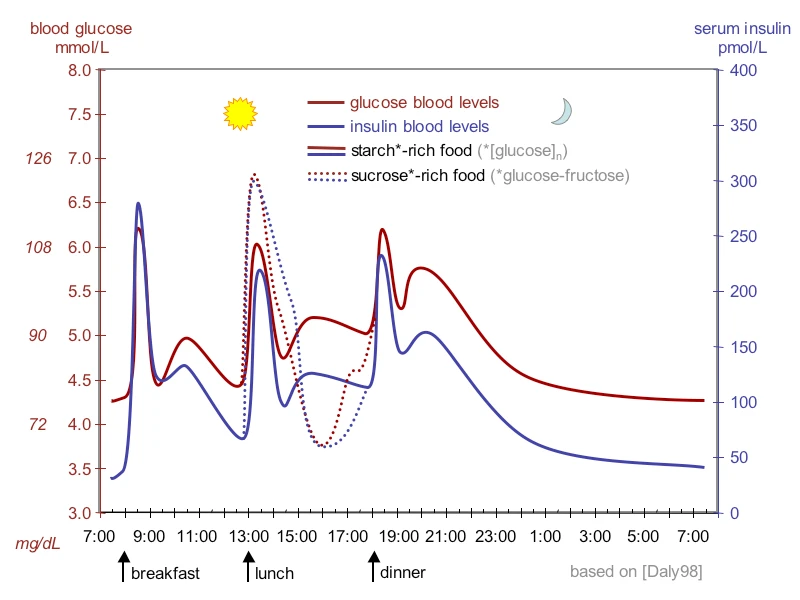Glycemic Index (GI) is a measure of how quickly a particular food can raise your blood sugar levels.

The glycemic index of a food item is determined by measuring the incremental area under the two-hour blood sugar level curve (AUC) subsequent to a 12-hour period of fasting and ingestion of the food item that has a certain amount of available carbs (most commonly 50 g).
The AUC of the test food is divided by the AUC of the standard (either glucose or white bread, with two distinct definitions) and multiplied by 100. The average GI value is determined from data acquired from 10 human participants.
Both the standard and test food must contain the same amount of available carbohydrates. This gives a ranking of each tested food in comparison with each other.
The GI values of foods range from 0 to 100. Foods with a GI of 0-55 are considered to have a low GI, those with a GI of 56-69 are considered to have a medium GI, and those with a GI of 70 or higher are considered high GI foods. Low GI foods result in a lower rise in blood sugar, while High GI foods result in a higher rise in blood sugar.
The accuracy of GI values can be affected by a number of factors, including the ripeness of the food, the processing of the food, and the cooking method used. In addition, GI values can vary between brands of the same food.
To calculate the GI of a meal, you need to know the GI values of the individual components of the meal. For example, if you were to make a meal of one cup of cooked brown rice (GI = 50) and one serving of grilled salmon (GI = 25), you would add the GI values together to get a total GI of 75.
In conclusion, Glycemic Index is an important measure of how quickly particular foods can affect blood sugar levels. Knowing and understanding the GI values of different foods can help you make informed dietary choices to help maintain healthy blood sugar levels.


